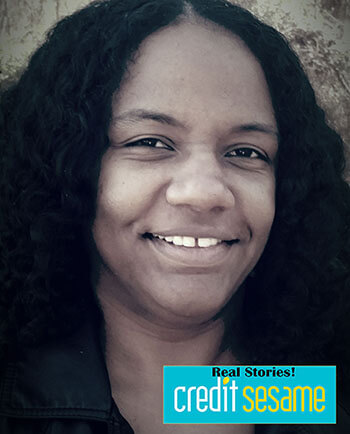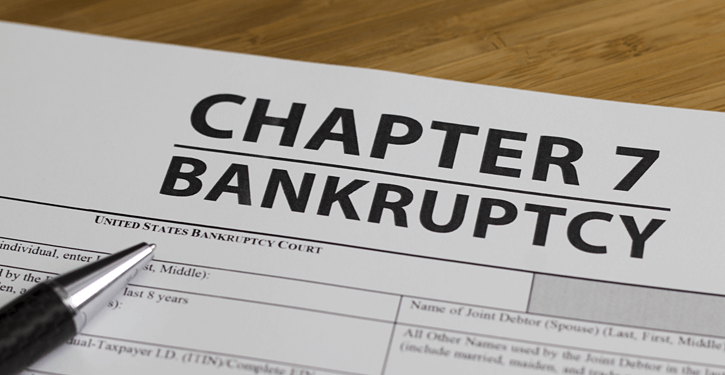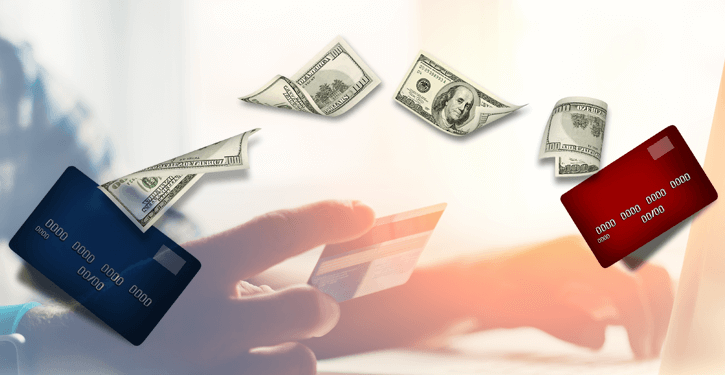At just 24, Latoya Scott faced nearly $100,000 in debt. She owed $30,000 on credit cards, $7,000 for a car loan, $8,000 for medical bills, and $50,000 in student loans.
“At 24 years old, having that amount of consumer debt was debilitating,” Latoya says.
She even stayed in school, at least in part, to avoid making payments. “I couldn’t afford the student loan payments which was one of the major factors leading me back to grad school,” she recalls.
 Latoya considered bankruptcy
Latoya considered bankruptcy
Latoya’s mom had watched another family member’s experience with financial difficulties, and suggested that Latoya consider bankruptcy.
The decision to file for bankruptcy is never easy. Many consumers have serious moral reservations about asking a court to discharge a debt that is rightfully owed. Also, bankruptcy severely tarnishes the consumer’s credit score. Although the damage diminishes over time, the bankruptcy will continue to have a significant negative impact on credit rating until it ages off the consumer’s credit file (ten years from the date of discharge).
Latoya filed for Chapter 7 bankruptcy in 2008 and was relieved of much of her debt. Her student loan debt and auto loan were not discharged. Student loan debt is almost never discharged in bankruptcy, nor is debt for an asset that the court allows the debtor to keep.
Latoya’s credit score dropped to the mid 500s, but it was already low since she had so much debt and struggled with payments.
What is Chapter 7 bankruptcy?
Chapter 7 bankruptcy is a legal solution intended to reduce or eliminate debt. Only people who meet an income and means test are eligible to file for Chapter 7. If you can afford a debt repayment plan, you will be steered to a Chapter 13 plan instead. You can read more on USCourts.gov.
Filing for Chapter 7 bankruptcy limits actions that creditors can take against you. They cannot continue attempts, including garnishment, to collect what you owe.
Most cases of bankruptcy are caused by financial hardship. The number of bankruptcy filings in the U.S. has steadily increased over the last century, especially since 1980.
Chapter 7 bankruptcy is best for unsecured debt (like credit card debt, personal loans, and medical bills) and debtors can protect certain assets up to a predetermined amount. Secured debt, student loans, child support, past due taxes and mortgages will not be discharged but the debtor is protected against collections efforts and lawsuits.
Chapter 13 bankruptcy is an individual debt adjustment, for people with regular income. It works like a consolidation loan. The debtor enters into a three- to five-year payment plan. Chapter 13 can protect cosigners and stop foreclosure proceedings.
Life changes after filing for bankruptcy
Latoya faced many challenges as she tried to rebuild her finances. Before the bankruptcy, Latoya used shopping as an emotional drug. She was easily tempted to charge a Coach purse on a whim and worry about the bill later.
“I used shopping as a coping mechanism for whatever was going on in my life at the time.”
After filing, she learned tough lessons.
“I had to learn to live within my means, Latoya says. “I didn’t want to use my husband’s credit after we got married as a way to relieve my urge to shop. I also didn’t want to be authorized on anyone else’s card because I knew I needed to improve my spending habits on my own.”
The financial stress didn’t go away with the forgiven debt. It just took a toll in other ways. “Food became my new coping mechanism,” she says.
Recovering from bankruptcy and protecting her credit
Keeping her car loan allowed Latoya to improve her credit as she paid it off. “I paid my car loan off [about a year later], which gave my credit score a significant boost,” she says.
Latoya and her husband found out they were expecting a baby, and they wanted to buy a home. Once her bankruptcy discharge was two years old, she became eligible for an FHA loan.
“With my husband’s excellent credit history and my rising credit, we were able to finance a mortgage through Bank of America in the summer of 2010.”
Latoya eventually got a new credit card, about three years after she filed for bankruptcy.
“As my self-control got better and my need to spend for the heck of it all disappeared, I eventually signed up for a few more cards,” she says. “However, I only use them for credit card rewards and pay them off in full each month. Basically, if I don’t have the money to pay off the balance before the interest rate kicks in, I don’t use it.”
Latoya has seen her credit card interest rates steadily decline with responsible use. Her average rate dropped from 22% to 15% as her creditworthiness improved.
Latoya now uses Credit Sesame to track her credit. She recently checked her score and says it’s above 730 even though her bankruptcy won’t age off her credit report for another year.
Credit counseling
Before you file for bankruptcy, take advantage of the resources and solutions offered by the National Foundation for Credit Counseling. The NFCC is the largest and longest-serving nonprofit foundation dedicated to financial well-being. They certify credit counselors in all 50 states and provide free and low cost credit counseling, debt management programs and more.
Bruce McClary, Vice President of Communications for the NFCC, explains that a non-profit credit counseling agency is the best option for help.
“Non-profits have certain rules regarding how much they charge for services and how much of their service offerings are education-based. For-profit credit counseling agencies do not operate under the same rules,” he says.
The best recovery strategy includes education and knowledge. “It’s not likely that for-profits will provide financial education in addition to their credit counseling services which is what people really need,” McClary says.
NFCC agencies offer a range of services including student loan debt counseling and housing counseling for people who wish to own a home or face foreclosure.
Non-profit credit counseling agencies also offer Debt Management Programs (DMPs) to help the consumer rebuild credit from the ground up. In a DMP, the credit counseling agency creates a debt repayment plan that consolidates existing debt at a lower interest rate that creditors agree to. Creditors also agree to waive certain fees. These concessions may be hard to obtain outside of a DMP.
“For people who are falling behind, reaching out to a non-profit credit counselor is a smart first step,” McClary says. “They will benefit from a full review of their budget as well as a review of their debt obligations, along with solutions that will help them get back on track.”
McClary explained that the only reason a consumer might not want to enlist the help of a non-profit credit counseling agency is that they want to keep their accounts open. Consumers may not maintain open credit accounts during a DMP administered by a non-profit credit counseling agency.
Many services educational resources provided by NFCC member organizations are free; others incur a small fee. Fees are always based on affordability. The average fee for a service or class is around $25.
Other alternatives to bankruptcy
Alternatives to bankruptcy include refinancing or consolidating your debt. When you refinance, you pay debt off your with a new loan at a lower interest rate to save money. Consolidating allows you to combine accounts to make a single, usually lower, monthly payment.
If you have credit card debt, you might also be able to take advantage of a low interest balance transfer. This option is only available if your credit is good enough to qualify for the new card. Also, opening a new credit card opens the door to increasing your overall debt load.
If you consider a balance transfer, remember that the promotional interest rate will eventually expire, and the regular interest rate might be quite high.
Life after hard financial times
Latoya learned that she had to examine and understand the root causes of her debt if she wanted to improve her financial health on a long-term basis.
“If you don’t understand how you got into debt and aren’t willing to change that behavior, you’ll end up right back where you started,” Latoya says.
Latoya now runs a personal finance blog, Life and a Budget, where she uses her personal experience to teach others how to manage their money better, earn more, and embrace living well on a budget.













 Latoya considered bankruptcy
Latoya considered bankruptcy










